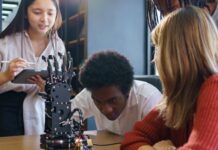The future of learning hinges on a critical question: how do we reliably demonstrate what individuals truly know and can do? Microcredentials, digital portfolios, and emerging Learner Employment Records (LERs) all promise solutions, but the core challenge remains: can we create signals that are both visible and valuable across classrooms, communities, and careers? These signals are the proving ground for a learner-centered ecosystem – and the pressure point where it may fail.
The Promise: Making Learning Visible and Valuable
When done right, effective learning signals reduce friction by aligning education with opportunity. Instead of relying solely on degrees or seat time, these signals highlight demonstrated skills and authentic experiences. As Dr. Isaac Agbeshie-Noye points out, the problem isn’t a talent shortage; it’s a coordination failure. A functional signaling system would allow employers to see what candidates can do, not just their job titles.
In K-12, better signals would give students clear, portable ways to demonstrate readiness for career-connected learning and community projects. In higher education, they would translate coursework, research, and internships into recognized proof of growth. This isn’t just about technical innovation; it’s a fundamental shift in how we define, measure, and communicate mastery – a transformation that requires developing judgment, motivation, and real-world context, as emphasized by Dr. Tony Wagner and Dr. Ulrik Christsen.
The Pressure: Building Trust and Coherence
Even with strong design, adoption remains the biggest obstacle. Learning signals are fragile: they depend not only on data standards and infrastructure, but also on trust between learners, families, employers, educators, and policymakers.
The question of leadership is critical. Who is responsible for stewarding this system – schools, employers, states, or the learners themselves? States like Indiana and North Dakota are piloting digital wallets to store and share verified records, but no single entity currently “owns” coherence across the growing ecosystem.
Adoption is hampered by incentives and capacity. Without clear value propositions, accessible tools, and shared incentives, even strong models struggle to scale. Too often, innovation clashes with calcified legacy systems that reward compliance over change. To accelerate adoption, we must lower friction and raise perceived value for everyone involved.
The Wild Card: AI and the Future of Validation
Artificial intelligence is changing the game, but also raising new questions. AI may help translate experiences into validated skills, but it also introduces concerns about privacy, bias, and authenticity. Who vouches for the accuracy of AI-inferred skills? What happens when evidence is machine-summarized rather than human-verified? Human validation from educators, mentors, and supervisors will remain essential anchors for credibility.
Cross-sector collaboration is also critical. Bridging the gap between education, workforce, and industry requires a shared language and logic. Local ecosystems matter: the fastest path to legitimacy isn’t through national mandates, but through local pilots that prove what works and build trust.
The Tension: Experience vs. Skills
The field remains divided on what to credential. Most focus on skills, which are measurable and directly connected to workforce needs. But skills need context and evidence to be valuable. This is where experiences come in. Experiences integrate skills, context, and human judgment, revealing not only what someone can do, but how and why.
Context matters because capability is conditional. The same “collaboration” skill looks different if earned on a high-stakes project versus a classroom activity. To address this, Getting Smart has developed Experience Quality Indicators—Responsibility, Complexity, and Novelty—to measure and validate the quality of learning experiences.
This approach aligns with the work of Education Design Lab (EDL), which identifies Autonomy, Complexity, and Influence as key dimensions of durable skills. Real mastery blends skill, will, and purpose, as emphasized by Wagner and Christsen.
The Bottom Line
The future of learning signals hinges on answering critical questions: how can we bridge the gap between skills and experiences? How can AI help translate learning while safeguarding privacy and credibility? What can we learn from existing pilots? And how can we build trust and confidence across all stakeholders?
The stakes are high: the success of a learner-centered ecosystem depends on making learning visible, valuable, and verifiable – and doing so in a way that builds trust and coherence across the entire system

































































